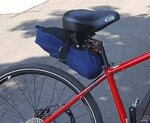Larry Ganz
Active Member
The blue window represents a cyclist's normal cadence range, the curve represents the motor's efficiency. You can play around the Bosch's website on their range calculator and you will find out that the cadence that provides the best range is from 70 RPM to 89 RPM, exactly within the window of a human cyclist's normal cadence range. How cool is that?
https://www.bosch-ebike.com/us-en/service/range-assistant/
Note, the efficiency chart was about the early version of the Bosch motor. The current efficiency can be extrapolated from the current Bosch range calculator website. My field of interest has been on efficient automotive propulsion system design, especially hybrid vehicles but also in ICE and electric vehicles. So I am familiar at charts and curves especially when it comes to torque, power, and efficiency.
My normal cadence range is 50-70 rpm.




